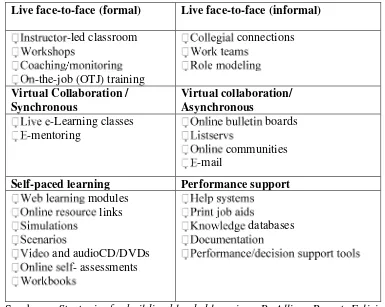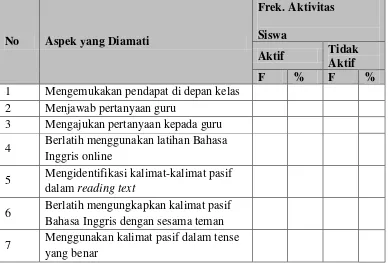Informasi Dokumen
- Penulis:
- Iis Sholihah
- Pengajar:
- Prof. Dr. Ir. Sugeng P. Harianto
- Dr. Bujang Rahman
- Dr. Adelina Hasyim
- Dr. Herpratiwi
- Dr. Muhammad Sukirlan
- Drs. Hery Yufrizal
- Drs. Sudirman
- Sekolah: Universitas Lampung
- Mata Pelajaran: Pascasarjana Teknologi Pendidikan
- Topik: Increasing English Passive Voice Mastery for Class XI Using Blended Learning Method
- Tipe: Thesis
- Tahun: 2014
- Kota: Bandar Lampung
Ringkasan Dokumen
I. INTRODUCTION
The introduction establishes the context for the study, highlighting the importance of mastering the English passive voice for students in Class XI, particularly in the context of national exams. The author discusses the traditional teaching methods that have been employed and their limitations in engaging students. The need for innovative approaches, such as blended learning, is emphasized to foster a more interactive and effective learning environment. The introduction also outlines the objectives of the research, which include developing lesson plans, implementing blended learning, and evaluating its effectiveness in improving students' mastery of passive voice.
II. LITERATURE REVIEW
This section delves into various learning theories relevant to the study, including behaviorism, cognitive theory, and constructivism. The author explains how these theories underpin the design and implementation of blended learning. For instance, behaviorism focuses on observable changes in behavior as a result of learning, while cognitive theory emphasizes the mental processes involved in learning. Constructivism is highlighted for its emphasis on active learning, where students construct their own understanding. The literature review also discusses the principles of blended learning and its application in teaching English grammar, particularly passive voice.
III. RESEARCH METHODOLOGY
The methodology section outlines the research design, which is based on classroom action research conducted over three cycles. It describes the participants, who are Class XI students at MAN 1 Model Bandar Lampung, and the instruments used for data collection, including scoring guides for passive voice, questionnaires, and observation guides. The section explains the steps taken in each cycle, including planning, implementation, observation, and reflection, to assess the effectiveness of the blended learning approach in enhancing students' understanding of passive voice.
IV. RESULTS AND DISCUSSION
In this section, the author presents the findings from the three cycles of action research. The results indicate a progressive improvement in students' mastery of the passive voice, with scores increasing from Cycle I (66.64) to Cycle III (82.18). The discussion highlights the positive impact of blended learning on student engagement and participation in the learning process. The author analyzes the effectiveness of various teaching methods integrated into the blended learning approach, including face-to-face instruction and online resources, and discusses how these methods contributed to the observed improvements in student performance.
V. CONCLUSION AND RECOMMENDATIONS
The conclusion summarizes the key findings of the research, reaffirming that the blended learning method significantly enhances students' mastery of the English passive voice. The author emphasizes the importance of integrating technology in language teaching to create a more dynamic learning environment. Recommendations for future research and practice include further exploration of blended learning strategies and the need for teacher training in utilizing technology effectively in the classroom. The conclusion also calls for ongoing assessment and adaptation of teaching methods to meet the evolving needs of students.
Referensi Dokumen
- Implementing Blended Learning Strategy to Increase Students’ Achievement on the English Tenses at Brawijaya University ( Aziz, Aulia Luqman )
- Action Research in the Classroom. Penelitian Tindakan Kelas. Edisi Bahasa Indonesia ( Baumfield, Vivienne et al. )
- Acts of Meaning ( Bruner, Jerome S. )
- The Teaching of English as a Foreign Language in Indonesia ( Cahyono, B. Y. et al. )
- Becoming Critical: Education, Knowledge and Action Research ( Carr, W. and Kemmis, S. )







